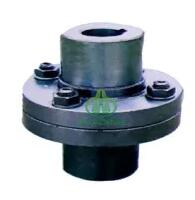May. 24, 2024
Rigid couplings and flexible couplings are mechanical devices used to connect two shafts in a mechanical system. Here are the key differences between them:
Rigid Couplings
1. Design and Construction:
- Rigid couplings are solid units designed to firmly connect two shafts, maintaining precise alignment between them.
- Common types include sleeve couplings, clamp or split-muff couplings, and flange couplings.
2. Alignment Requirements:
- Rigid couplings require perfect alignment of the shafts. Any misalignment can cause stress and lead to damage or failure of the coupling or the connected machinery.
3. Applications:
- Used in applications where precise shaft alignment is necessary and where the connected components are in close, stable positions.
- Commonly found in high-precision machinery, such as CNC machines, or in simple, low-speed applications where alignment is easily maintained.
4. Advantages:
- High torque transmission capacity due to their solid structure.
- Simple design, easy to install and maintain.
5. Disadvantages:
- No tolerance for misalignment, which can cause high stress and potential damage.
- Vibration and shock are transmitted directly between connected components.

1. Design and Construction:
- Flexible couplings incorporate elements (such as elastomers, springs, or sliding mechanisms) that allow for some degree of flexibility and movement between the connected shafts.
- Common types include jaw couplings, elastomeric couplings, gear couplings, and universal joints.
2. Alignment Tolerance:
- Flexible couplings can accommodate various types of misalignment, including angular, parallel, and axial misalignments.
- They can absorb shock and vibration, protecting the connected machinery from damage.
3. Applications:
- Used in applications where some degree of misalignment is unavoidable or where vibration and shock absorption are beneficial.
- Commonly found in pumps, motors, conveyors, and other rotating equipment subject to misalignment or needing vibration damping.
4. Advantages:
- Ability to accommodate misalignment, reducing stress on shafts and components.
- Absorption of shock and vibration, leading to smoother operation and reduced wear.
- Increased lifespan of connected machinery due to reduced stress and vibration transmission.
5. Disadvantages:
- Generally lower torque transmission capacity compared to rigid couplings.
- More complex design, which can be more expensive and require more maintenance.
Summary
- Rigid Couplings: Best for applications with precise alignment, high torque requirements, and where vibration damping is not necessary.
- Flexible Couplings: Ideal for applications where misalignment is expected, where vibration damping is beneficial, and where protecting machinery from shock and stress is important.
If you are interested in sending in a Guest Blogger Submission,welcome to write for us!
All Comments ( 0 )